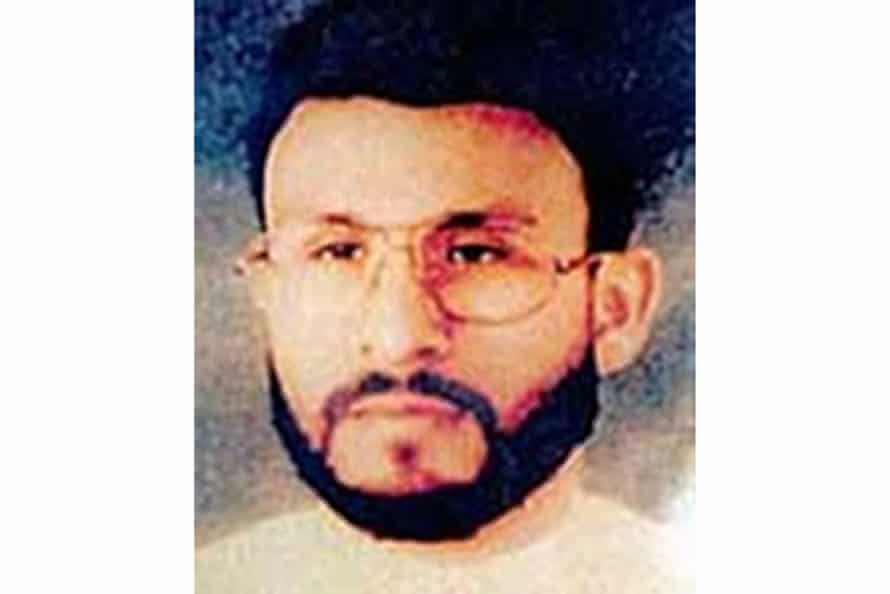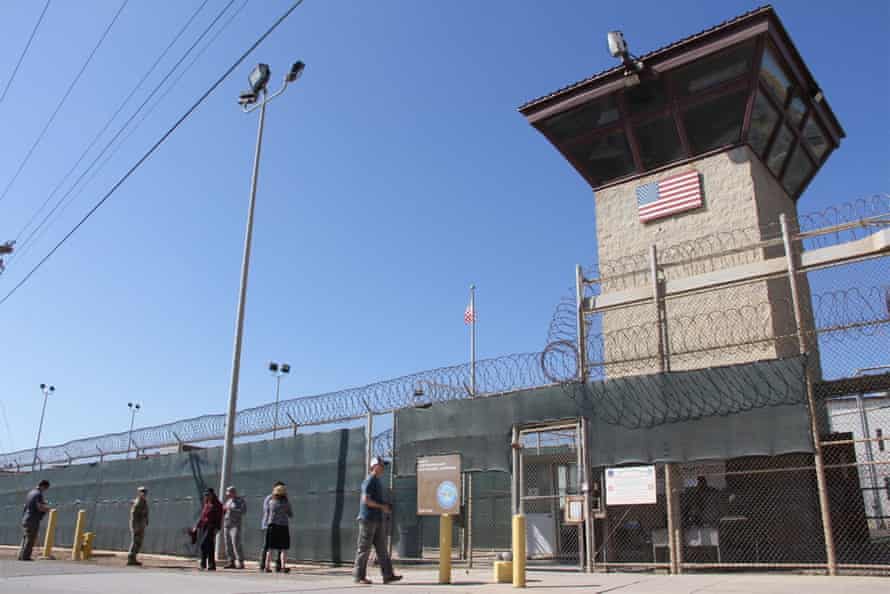Few would dispute that, in the aftermath of the September 11, 2001 terrorist attacks on New York and Washington, Zubaydah was a person of interest (“He’s not Hollywood innocent, as even his lawyer would say,” Gibney notes). The Saudi-born Palestinian had fought in Afghanistan. He forged passports, arranged travel for jihadists and had knowledge of terrorist plots. He used more than 30 aliases and was seen as a master of disguise.
But when Zubaydah was captured in Pakistan in March 2002 (he was shot while trying to escape), he was wrongly demonised as a high-level al-Qaida operative rather than an independent facilitator. He was whisked to a secret location in Thailand for questioning by men obsessed with how to prevent another 9/11.
Gibney says: “Abu Zubaydah was patient zero for the CIA’s torture programme. That’s the reason to investigate his story because you learn how the rule of law was upended. How we went down a road where we were more interested in listening to what we wanted to hear, which is what torture tends to give you, rather than what the facts really were.”
Zubaydah underwent enhanced interrogation techniques at the hands of CIA contractors, including 83 applications of waterboarding in one month alone. In an account he gave to his lawyer in 2008, Zubaydah recalled: “They kept pouring water and concentrating on my nose and my mouth until I really felt I was drowning and my chest was just about to explode from the lack of oxygen.”

He also spent more than 11 days in a coffin-sized box, and 29 hours in an even smaller box just 21 inches wide, 2.5 feet deep and 2.5 feet high. The documentary includes images of brutal treatment drawn by Zubaydah himself as well as entries from his pre-capture and post-capture personal diaries.
The US was deploying torture as government policy for the first time in history – and it was wildly haphazard. Gibney adds: “The CIA would like to pretend that it was a scientific programme carefully calibrated by rigorous scientists. That’s not true at all. It was just improvised. ‘Let’s try 24 hours of sleep deprivation. That’s not working. How about 48 hours? How about 72 hours?’
“Well, your mind turns to mush after 72 hours of sleep deprivation and they could have asked one of their own experts who would have said, actually, your cognitive ability just about disappears at that point. So why would you interrogate somebody after 72 hours of sleep deprivation? It’s nonsensical. Clearly, when they were on the waterboard, they didn’t know how far to go.
“What horrified me when I got into the details of this was how careless and reckless and ad hoc the whole thing was. It was just shoot from the hip. ‘Hey, let’s try a little bit of nudity today. How about some cold water? Oh, that’s not working. Let’s try the old hang ‘em from the wrists.
“‘Let’s put him in a box where he will defecate on himself for four or five days. That might work. Let’s play music really loud. How about some Red Hot Chili Peppers over and over and over again?’ That was a period where officially EITs had not been legally approved so they’re just improvising their spitballing.”
For Gibney, the case offers a stark demonstration that there are rules against torture because it is both immoral and fails to produce fact-based evidence.
“Over the course of doing documentaries for a number of years, I keep coming across this phrase ‘noble cause corruption’. Once people think they’re doing something for a noble cause, they allow themselves to start bending the rules, like planting a joint on a on a perp you can’t get any other way and then the next thing you know, you’re killing people.
“I would hope that people would begin to understand that the notion of the end justifies the means is never a good idea because once you accept that, it means you’re basically allowing yourself to upend the very principles that you’re claiming to uphold.”

He interviews James Mitchell, a retired air force psychologist and the chief architect of the EITs, who expresses no regrets for doing what he saw as his patriotic duty.
Mitchell tells the filmmaker: “If my boss tells me it’s legal, especially if the president has approved it, I’m not going to get into the nuances about what some guy in the basement or what some journalist thinks about it, because they’re free to trade places with me any time they think they can do a better job of protecting Americans.”
Gibney also sued the CIA to un-redact former FBI agent Ali Soufan’s book, The Black Banners: How Torture Derailed the War on Terror after 9/11, and gained access to Soufan’s interrogation notes about his time with Zubaydah. This enabled Soufan to speak more freely than before and shed new light on the case.
Gibney reflects: “The reason for [the torture] had always been that Abu Zubaydah was completely uncooperative. What was revealed in the new Ali Soufan interview, along with his interrogation notes, was that within an hour or two of interrogating him, he gave them an ongoing plot.
“That was in Israel funded by the Saudis and they helped to stop that plot. So knowing that you’d have to conclude he was completely cooperative: he’s giving them an ongoing plot that they can actually stop. But the conclusion reached by the CIA was just the opposite.”
Zubaydah was taken to further black sites in Poland, Guantánamo Bay, Morocco, Lithuania, Afghanistan and back to Guantánamo Bay, where he has been held since 2006. Somewhere along the way in CIA custody he lost his left eye; he now wears a patch.
Unable to speak to him directly, Gibney could only communicate via his lawyers. “On the one hand his lawyer calls him a diva and says he’s a man of fierce intelligence, a dark sense of humour, but also somebody who has been deeply traumatised. He has fierce headaches, he has nightmares of drowning, not surprisingly.”
It emerged last week that Zubaydah has petitioned a federal court for his release on grounds that US wars in Afghanistan and with al-Qaida are over. A legal filing describing his treatment over the past 20 years as a “parade of horribles”.
For the time being, however, he remains in a legal twilight zone, out of sight and out of mind except when filmmakers such as Gibney force America to re-confront the stain on its moral authority. The director casts Zubaydah as the origin story of America’s defining failure of intelligence and the betrayal of its ideals.
“I hope that this is a wake up call,” he says. “When you go through the things that they put Abu Zubaydah through and also the way in which it was done in such a ham fisted, careless and frankly stupid fashion, I hope people will say, ‘I can’t believe this really happened and that we allowed this to happen’.
“Furthermore, I hope the intellectual reaction will be to say Guantánamo as a prison, as a place outside the law, is some kind of cruel joke and we’ve got to shut it down because it’s not who we aspire to be. He’s there in Gitmo not because of what he did to us but for what we did to him. That’s why he’s being kept silent.”
The Forever Prisoner is now available on HBO with a UK date to be announced
Are we prepared to abandon our principles in order to defend them? #TheForeverPrisoner, an HBO original documentary film that takes viewers, for the first time, behind the architects of America's torture program. Premieres December 6 on HBO Max. From acclaimed director Alex Gibney (HBO’s “The Crime of the Century,” “Agents of Chaos,” “The Inventor: Out for Blood in Silicon Valley”), The Forever Prisoner is an unflinching look at how America’s torture policy began with CIA captive Abu Zubaydah -- the first high-value detainee subjected to the CIA’s program of Enhanced Interrogation Techniques (EITs), later identified as torture by those outside the agency. Having never been charged with a crime or allowed to challenge his detention, Zubaydah remains imprisoned at Guantánamo Bay in Kafkaesque limbo, in direct contravention of America’s own ideals of justice and due process.


No comments:
Post a Comment